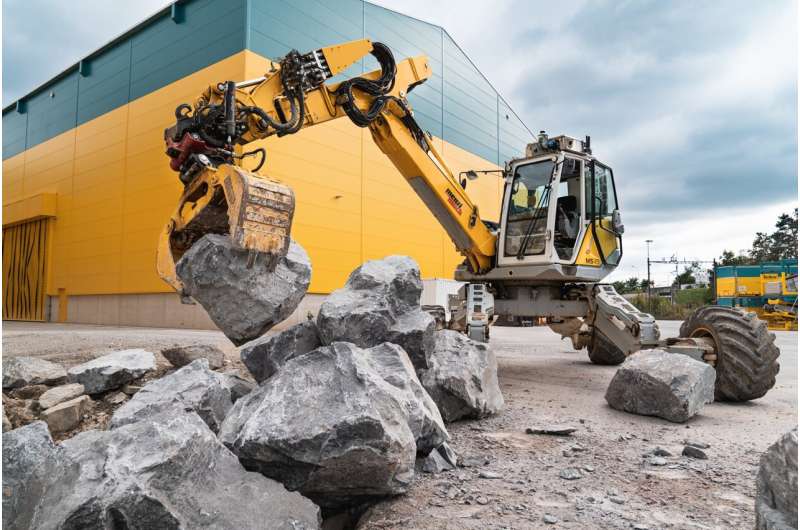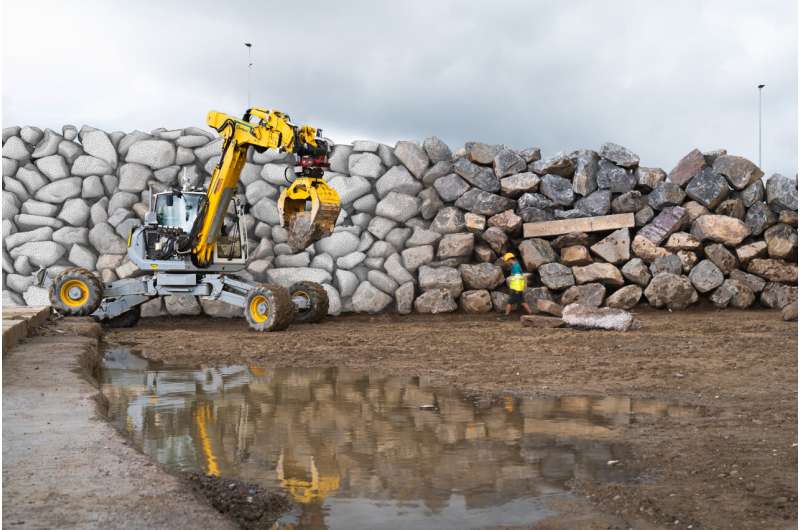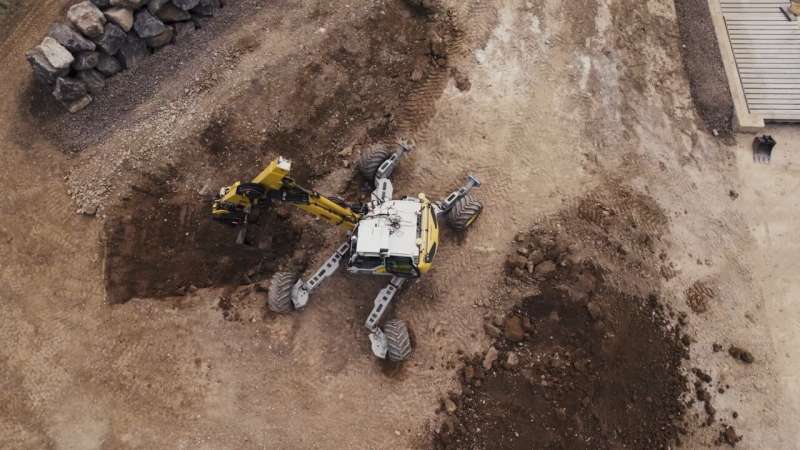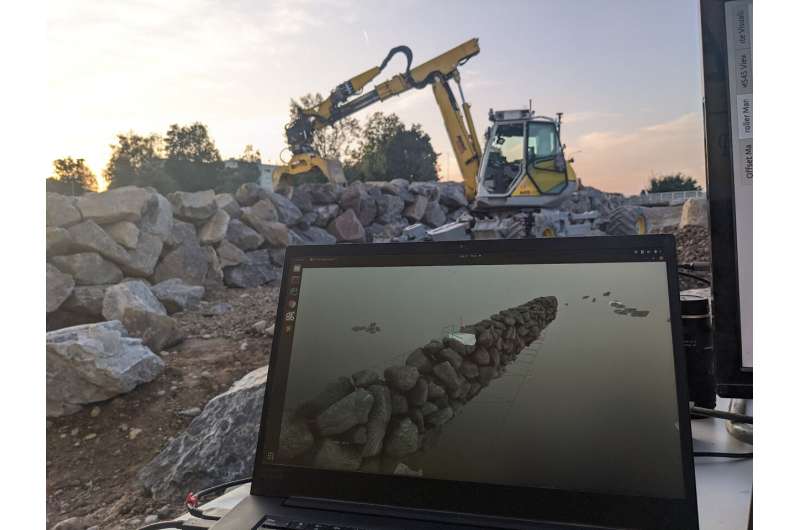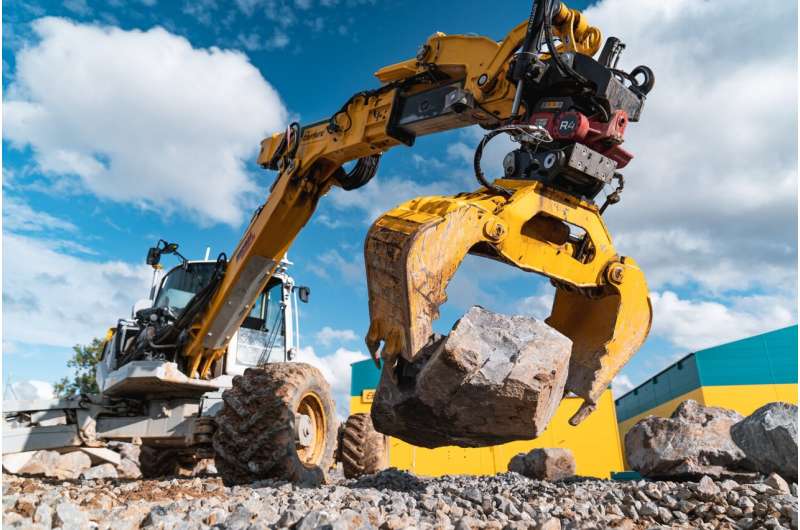The Menzi Muck picks and scans each boulder to be placed in the correct position, Circularity Park in Oberglatt, Eberhard AG, 2021–2022. Credit: Gramazio Kohler Research, ETH Zurich, Eberhard AG. Photo: Marc Schneider.
ETH Zurich researchers deployed an autonomous excavator, called HEAP, to build a 6-meter-high and 65-meter-long dry-stone wall. The wall is embedded in a digitally planned and autonomously excavated landscape and park.
The team of researchers included Gramazio Kohler Research, the Robotics Systems Lab, Vision for Robotics Lab, and the Chair of Landscape Architecture. They developed this innovative design application as part of the National Center of Competence in Research for Digital Fabrication (NCCR dfab). Their work has been described in Science Robotics.
Using sensors, the excavator can autonomously draw a 3D map of the construction site and localize existing building blocks and stones for the wall's construction. Specifically designed tools and machine vision approaches enable the excavator to scan and grab large stones in its immediate environment. It can also register their approximate weight as well as their center of gravity.
The Menzi Muck at the Circularity Park in Oberglatt, Eberhard AG, 2021–2022. Credit: Gramazio Kohler Research & Robotic Systems Lab, ETH Zurich, Eberhard AG. Video: Girts Apskalns
An algorithm determines the best position for each stone, and the excavator then conducts the task itself by placing the stones in the desired location. The autonomous machine can place 20 to 30 stones in a single consignment—about as many as one delivery could supply.
-
The Menzi Muck picks and scans each boulder to be placed in the correct position, Circularity Park in Oberglatt, Eberhard AG, 2021–2022. Credit: Gramazio Kohler Research, ETH Zurich, Eberhard AG. Photo: Marc Schneider.
-
Drone view of the autonomous excavator HEAP, Circularity Park in Oberglatt, Eberhard AG, 2021–2022. Credit: Gramazio Kohler Research, ETH Zurich, Eberhard AG. Photo: Girts Apskalns
-
Computational planning and stone placement using the autonomous excavator HEAP, Circularity Park in Oberglatt, Eberhard AG, 2021–2022. Credit: Gramazio Kohler Research, ETH Zurich, Eberhard AG. Photo: Ryan Luke Johns.
-
The Menzi Muck picks and scans each boulder to be placed in the correct position, Circularity Park in Oberglatt, Eberhard AG, 2021–2022. Credit: Gramazio Kohler Research, ETH Zurich, Eberhard AG. Photo: Marc Schneider.
More information: Ryan Johns et al, A framework for robotic excavation and dry stone construction using on-site materials, Science Robotics (2023). DOI: 10.1126/scirobotics.abp9758. www.science.org/doi/10.1126/scirobotics.abp9758
Journal information: Science Robotics
Provided by ETH Zurich
